While my wife and I were in Scotland recently, we were enamored with tales of Picts, Vikings, Highlanders, and Jacobites, but we could not help but also notice the seemingly endless World War I monuments strung throughout virtually every village in Scotland. Even as far north as the Orkney Islands, I saw several monuments in small villages with less than 100 inhabitants.
Each monument is unique, but they all have some of the same features. First, they originally focused on the Great War (1914-1918 or 1919). Second, there is always a modification of the monument to list soldiers killed in World War II or at least mention the war. These modifications tend to blend very well with the original monument. Third, the monuments all stand in a pillar-like fashion. Some are crosses, some are soldiers, and others are obelisks.
Below is the monument in Durness.
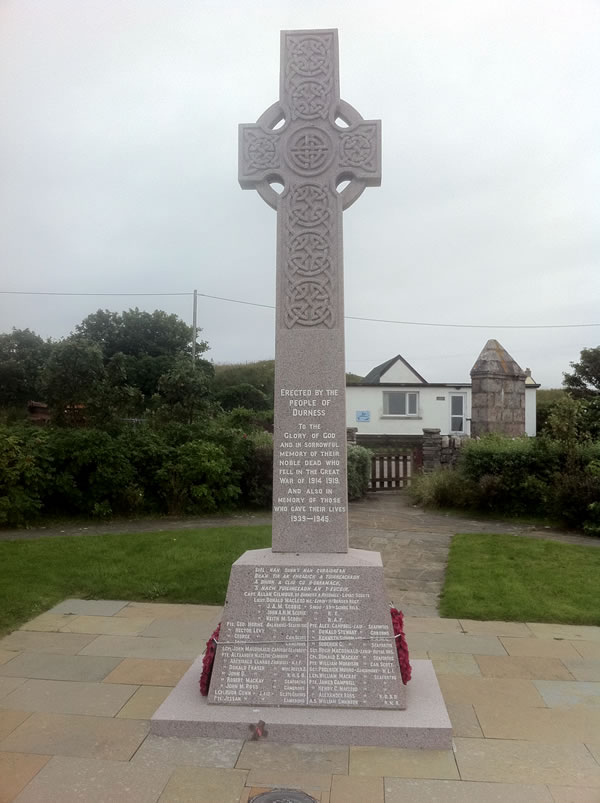
Notice the text on the front of the Durness monument. There is a sentence about the Great War followed by another mentioning the dates that Britain participated in World War II. That sentence starts with “And also . . .” Each monument appears to follow this format, which made me realize these monuments were built before World War II.
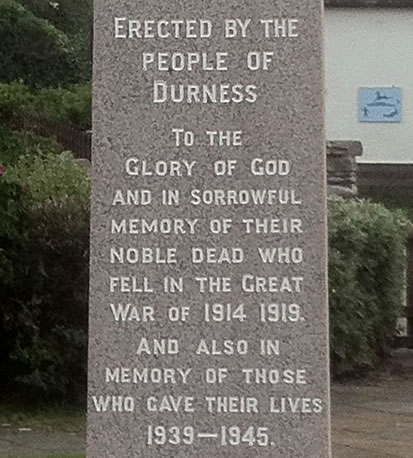
Below is the monument in Fort William, which is a city, not a fort.
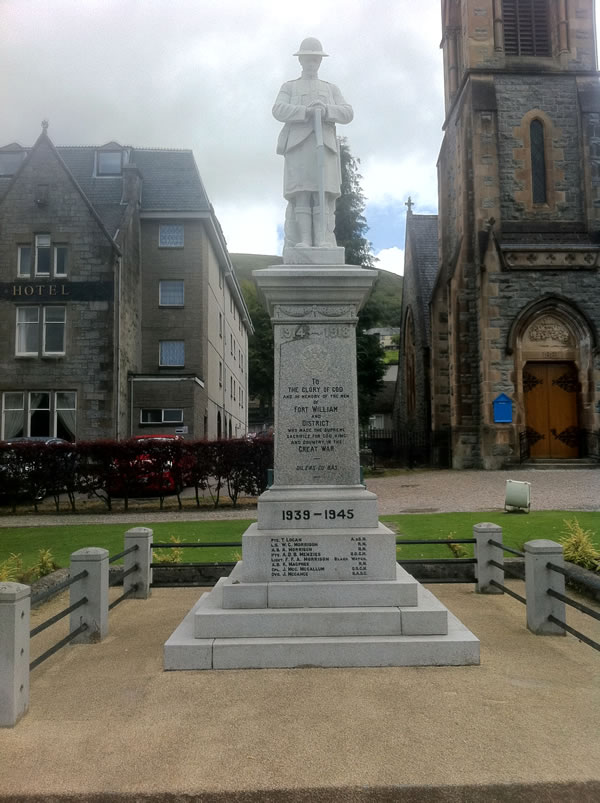
This monument features the same format of displaying dedication text to the Great War. Then it simply provides the dates for World War II with a list of those killed in action from the city.
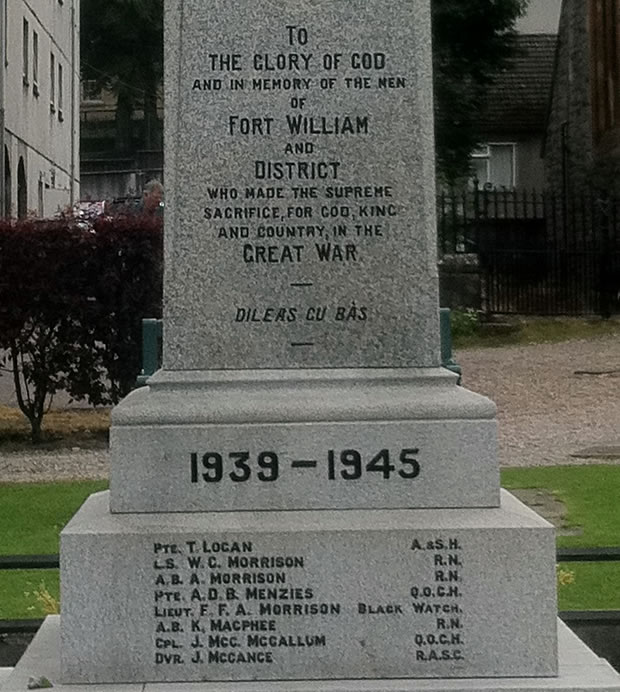
Even more interesting is the back of the monument, which mentions the Gulf War (1991) with the name of the sole citizen from Fort William who died in that war.
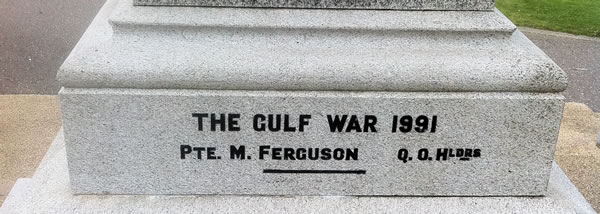
On our journeys, we met a family from northeast Scotland who graciously treated my wife and I to some Highland hospitality with Irn-Bru and vodka while discussing Scottish and American wars. We mentioned the prevalence of the monuments in an attempt to determine if there was some concerted, national effort to erect them. Their reactions were illuminating as they realized–seemingly, for the first time–how common these monuments were throughout Scotland. The structures are a feature of towns that the Scots of today grew up with, but they are so use to the monuments’ presence that they did not consider the origins. The Highlanders recalled how each year on Remembrance Sunday, the second Sunday of every November, they would walk from their churches to their local World War I monument to place wreaths, flowers, and other tokens.
The number of monuments is overwhelming. The Scottish War Memorials Project has recorded over 3,400 monuments. They are still counting, which is no simple task, especially since the creators of these structures include towns, churches, schools, and veterans.
Unique in the string of monuments was the one in Glasgow. This structure is massive and focuses almost entirely on World War I with one slight modification.
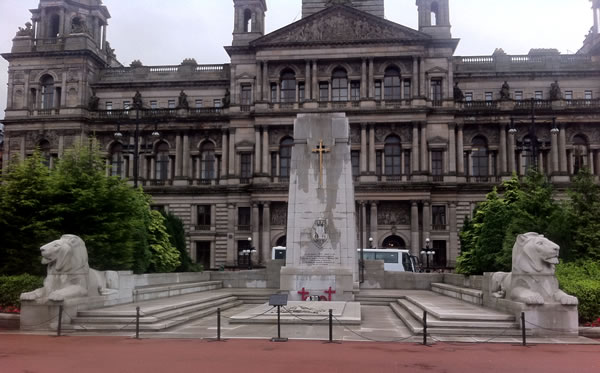
In the central pillar, there is text geared entirely toward the Great War, but above are the dates of both world wars.
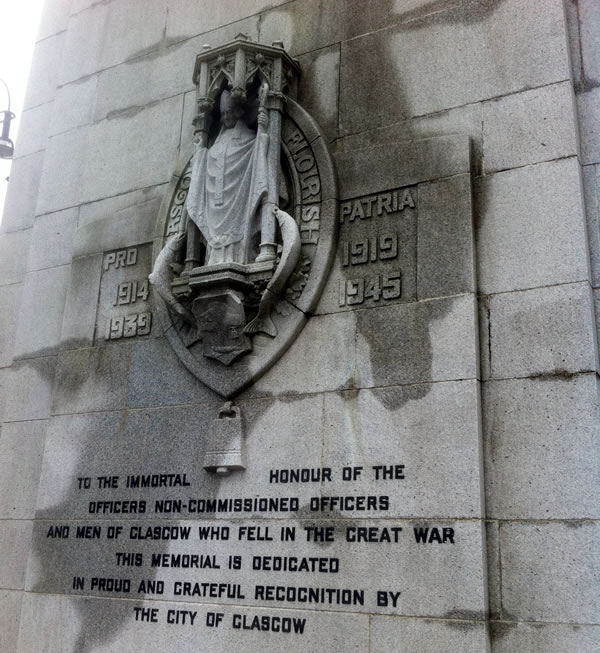
Viewing this monument was especially moving for several reasons. First, there was a sign asking visitors to treat it with respect. I wish more memorials had signs like this. Although I was in a busy city, I felt calm as I walked around.
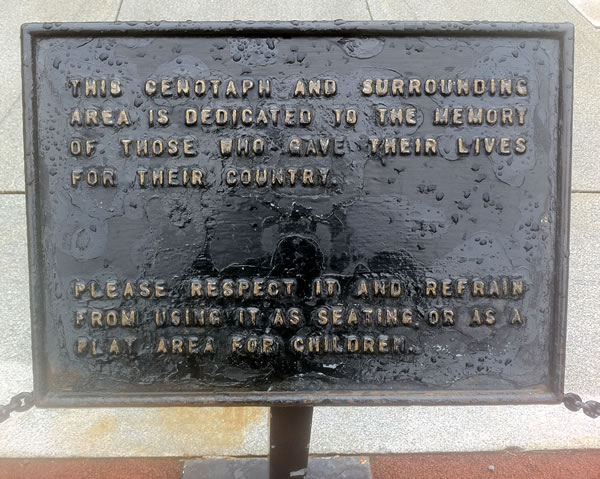
In addition, some of the text on the monument was very moving.
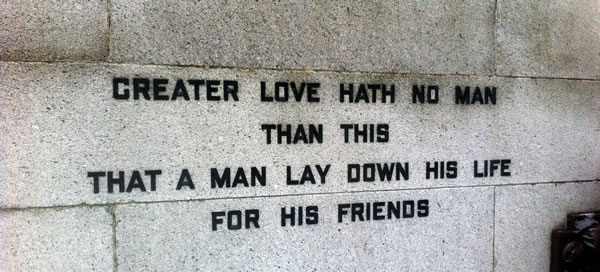
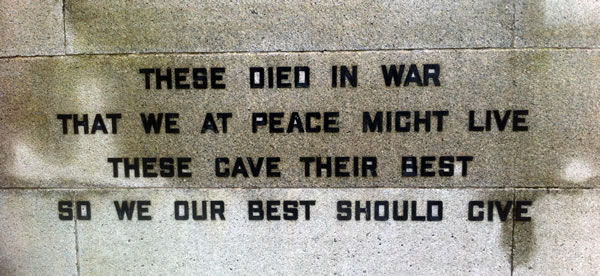
The lions were a nice touch as well.
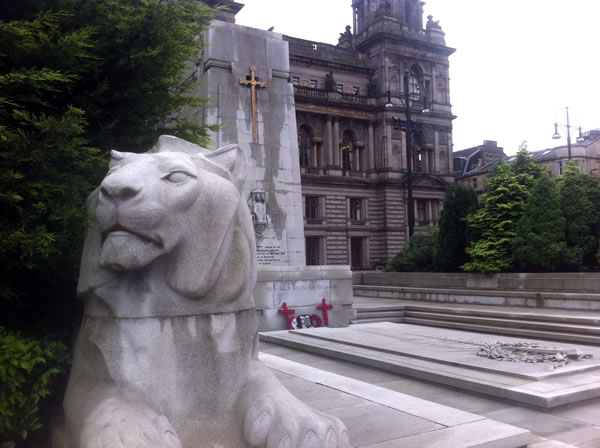
In the United States, we often refer to Korea (1950-1953) as the “forgotten war,” but we tend to forget several others, such as World War I. The centennial of the Great War is approaching and while it is clear that Scotland has more than 3,400 places to commemorate the war, most Americans could not tell you where their nearest World War I monument resides. This is sad, as we lost 120,144 troops in a very short period. I admittedly know of several monuments, but I am unsure if they are the closest to my house.
As it stands, we can certainly learn something from the Scots.
